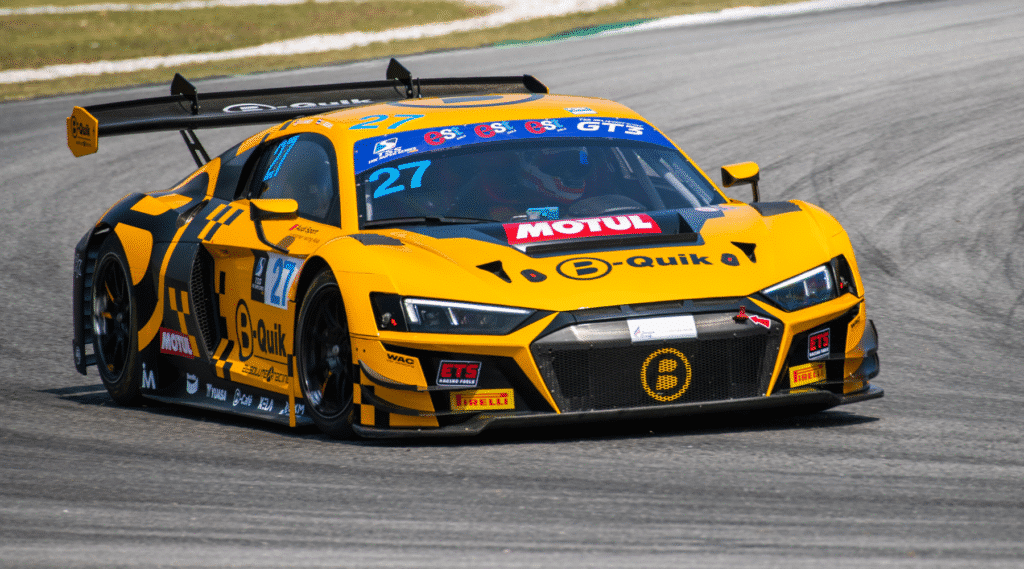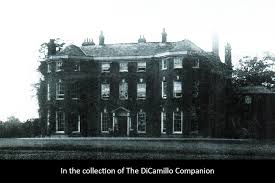Mercedes DTM AMG: The Ultimate Guide to German Touring Car Excellence

When it comes to high-performance motorsport Mercedes DTM AMG, few names resonate as strongly as Mercedes-AMG. Known worldwide for its precision engineering, raw power, and racing dominance, AMG has played a vital role in shaping Mercedes-Benz’s reputation in motorsport. One of the most celebrated arenas where this legacy shines is in the Deutsche Tourenwagen Masters (DTM), a premier touring car championship that became a proving ground for some of the most advanced racing machines. The partnership between Mercedes and AMG in DTM not only resulted in record-breaking victories but also created a motorsport legacy that influenced generations of road-going AMG models.
DTM, short for Deutsche Tourenwagen Masters, is often described as the pinnacle of German touring car racing. Unlike Formula One, which focuses on open-wheel single-seaters, DTM is centered on heavily modified versions of production-based touring cars. For Mercedes-AMG, competing in DTM was more than just racing—it was a stage to showcase engineering brilliance, technical innovation, and driver skill.
From iconic models like the 190E 2.5-16 Evolution II to the sleek AMG C-Class DTM cars, Mercedes-AMG has left an indelible mark on the championship. Beyond the trophies and victories, Mercedes DTM AMG cars symbolized a bridge between motorsport and consumer vehicles, proving that technology developed on the track could enhance performance on the road. This introduction sets the stage for exploring the origins, evolution, engineering, legendary drivers, and lasting legacy of Mercedes DTM AMG.
The Origins of Mercedes DTM AMG
The story of Mercedes in DTM begins in the late 1980s, when the championship was gaining momentum as one of Europe’s most exciting racing series. DTM provided manufacturers a platform to test their engineering capabilities while connecting with motorsport fans who recognized the cars on the track as close cousins of road-going models. For Mercedes, joining DTM was a natural step to reinforce its dominance in performance car culture.
AMG, originally an independent tuning company specializing in Mercedes performance upgrades, became the driving force behind the brand’s motorsport ambitions. With its deep knowledge of engines and racing modifications, AMG was uniquely positioned to lead Mercedes’ challenge in DTM. Their early collaborations resulted in the Mercedes 190E 2.5-16 Evolution, a car that is still celebrated for its blend of aggressive styling and competitive performance.
The entry into DTM was not without challenges. Mercedes had to face strong competition from rivals like BMW and Audi, both of which had established racing reputations. However, with determination and technical innovation, Mercedes-AMG quickly carved its place in the championship. The foundations laid during this era would define decades of racing dominance and solidify AMG’s role as Mercedes’ official performance and racing division.
By combining AMG’s technical expertise with Mercedes’ resources, the brand positioned itself as a major force in DTM. The origins of Mercedes DTM AMG not only reflect ambition but also the beginning of a partnership that would redefine German touring car racing for years to come.
Evolution of Mercedes DTM AMG Cars
The evolution of Mercedes DTM AMG cars is a story of continuous innovation. The early 190E set the standard with its iconic boxy silhouette and impressive handling, quickly earning a reputation as one of the most successful touring cars of its generation. Its racing success established a foundation upon which Mercedes and AMG continued to build.
Throughout the 1990s and 2000s, Mercedes introduced a series of cars that pushed the boundaries of engineering. The AMG C-Class DTM cars became some of the most dominant machines in the series, blending lightweight materials, aerodynamic designs, and powerful engines. Each iteration of the C-Class was meticulously engineered to balance speed, agility, and endurance, ensuring Mercedes stayed competitive against rivals.
Notable models include the CLK-DTM and later the AMG C63 DTM, both of which featured cutting-edge technologies that mirrored advancements in consumer AMG vehicles. This seamless connection between track and road cars reinforced Mercedes-AMG’s brand identity as a leader in both motorsport and high-performance luxury cars.
By the 2010s, the evolution reached new heights with more aerodynamic bodies, advanced hybrid materials, and engines capable of delivering over 500 horsepower. The transformation from the early 190E to modern AMG machines illustrates how Mercedes DTM cars became symbols of progress, reflecting changes in motorsport regulations and advancements in automotive engineering.
Performance and Engineering Excellence
What truly set Mercedes DTM AMG cars apart was their unmatched performance and engineering precision. Under the hood, these cars housed V8 engines capable of producing immense power, often exceeding 500 horsepower. These engines were not just about raw speed but also about delivering consistent performance across demanding race conditions.
Aerodynamics played a crucial role in shaping these racing machines. From large rear wings to aggressive front splitters, every design element was optimized through wind tunnel testing. These innovations allowed the cars to maintain stability at high speeds while maximizing downforce for superior cornering grip. Unlike many touring cars, Mercedes DTM AMG vehicles often pushed aerodynamic design to its limits, setting benchmarks for the competition.
Handling and suspension innovations were equally important. Engineers focused on creating a balance between rigidity and flexibility, ensuring the cars could handle sharp turns while maintaining stability on long straights. Advanced suspension systems allowed drivers to extract maximum performance, giving Mercedes a consistent edge over rivals.
Perhaps the most exciting aspect of this engineering excellence was its influence on consumer vehicles. Technologies tested and perfected in DTM often made their way into AMG road cars. This included advancements in engine tuning, braking systems, and aerodynamics. As a result, Mercedes customers benefited directly from innovations developed on the racetrack, reinforcing AMG’s motto of “one man, one engine” with true motorsport credibility.
Legendary Drivers and Racing Success

Mercedes DTM AMG cars were not only defined by engineering but also by the legendary drivers who piloted them to victory. Names like Bernd Schneider, Gary Paffett, and Mika Häkkinen are etched into DTM history, each contributing to Mercedes’ dominance on the track. Schneider, in particular, became a symbol of success, winning multiple championships and cementing his status as one of the greatest DTM drivers of all time.
These drivers thrived on the fierce competition that defined DTM. Battles against BMW and Audi created unforgettable rivalries, with Mercedes consistently emerging as a top contender. Each race was a display of not just speed but also strategy, with Mercedes drivers often praised for their precision and consistency.
Mercedes’ track record speaks for itself. Over three decades in DTM, the brand secured numerous drivers’ and constructors’ championships, making it the most successful manufacturer in the series’ history. This dominance was not accidental but the result of a perfect synergy between engineering brilliance and driver skill.
Memorable races, such as close finishes at Hockenheim and Nürburgring, showcased the drama and excitement that Mercedes brought to the championship. For fans, these moments highlighted the essence of Mercedes DTM AMG: a combination of power, precision, and passion for racing.
The Legacy and Future of Mercedes DTM AMG
The legacy of Mercedes DTM AMG extends far beyond the racetrack. For decades, it shaped the identity of both DTM as a championship and AMG as a performance powerhouse. Mercedes’ consistent success not only elevated its reputation but also inspired future generations of engineers, drivers, and fans.
This influence is clearly seen in AMG’s road cars, which carry design elements and technologies tested in DTM. From aerodynamic styling to high-performance engines, the DNA of DTM lives on in models like the AMG C63 and AMG GT. The connection between track and road remains one of AMG’s most compelling selling points.
In 2018, Mercedes announced its withdrawal from DTM, citing a strategic focus on other motorsport ventures such as Formula E and GT racing. While this marked the end of an era, it did not diminish the legacy. Instead, it highlighted AMG’s adaptability and commitment to future-oriented motorsport, especially in the context of electrification and sustainability.
Looking forward, Mercedes-AMG’s focus on innovation in electric performance cars suggests that the spirit of DTM will live on, albeit in new forms. Whether in Formula E or customer racing, AMG continues to uphold the values that made its DTM journey unforgettable.
Conclusion
Mercedes DTM AMG stands as a symbol of racing excellence, innovation, and legacy. From its early beginnings with the 190E to decades of dominance with the AMG C-Class and beyond, the journey reflects a unique blend of engineering brilliance and driver talent. The lessons learned on the racetrack directly shaped AMG’s road cars, proving that motorsport remains the ultimate testing ground for performance innovation.
Even though Mercedes no longer competes in DTM, its legacy remains woven into the fabric of the championship and motorsport history. For fans, engineers, and drivers, the story of Mercedes DTM AMG is not just about victories but about the pursuit of perfection. It is a reminder that true greatness in racing comes from passion, persistence, and performance.
FAQs About Mercedes DTM AMG
What does DTM stand for in Mercedes DTM AMG?
DTM stands for Deutsche Tourenwagen Masters, a premier German touring car racing series.
Which was the first Mercedes car to compete in DTM?
The Mercedes 190E 2.5-16 Evolution II was one of the first and most iconic cars to compete.
Who are the most successful Mercedes DTM AMG drivers?
Bernd Schneider, Gary Paffett, and Mika Häkkinen are among the most successful.
How did AMG contribute to Mercedes’ DTM success?
AMG engineered engines, aerodynamics, and performance upgrades, making Mercedes cars highly competitive.
What made Mercedes DTM AMG cars different from regular road cars?
They featured advanced aerodynamics, lighter materials, and high-powered engines designed for racing.
How many championships has Mercedes won in DTM?
Mercedes secured numerous constructors’ and drivers’ championships, making it the most successful DTM brand.
Why did Mercedes withdraw from DTM in 2018?
The brand shifted focus to Formula E and future motorsport strategies aligned with electrification.
Did DTM racing influence consumer AMG models?
Yes, technologies from DTM such as aerodynamics and engine tuning influenced AMG road cars.
What are the most iconic Mercedes DTM AMG cars?
The 190E Evolution II, CLK-DTM, and C-Class DTM are considered legendary models.
What is the future of Mercedes-AMG in motorsport?
The focus is now on Formula E, GT racing, and developing high-performance electric vehicles.
You May Also Read: Definition of Ijma




